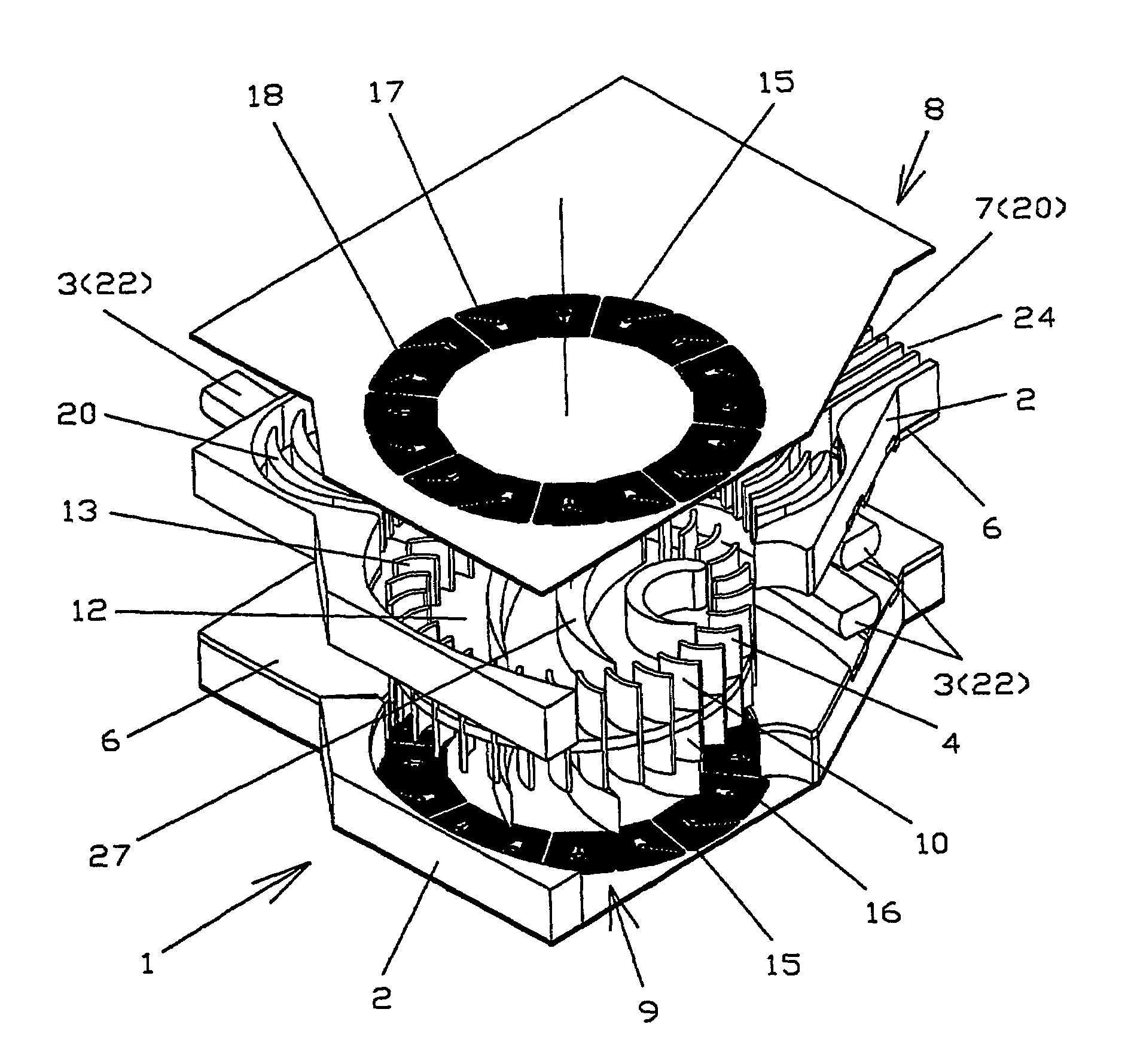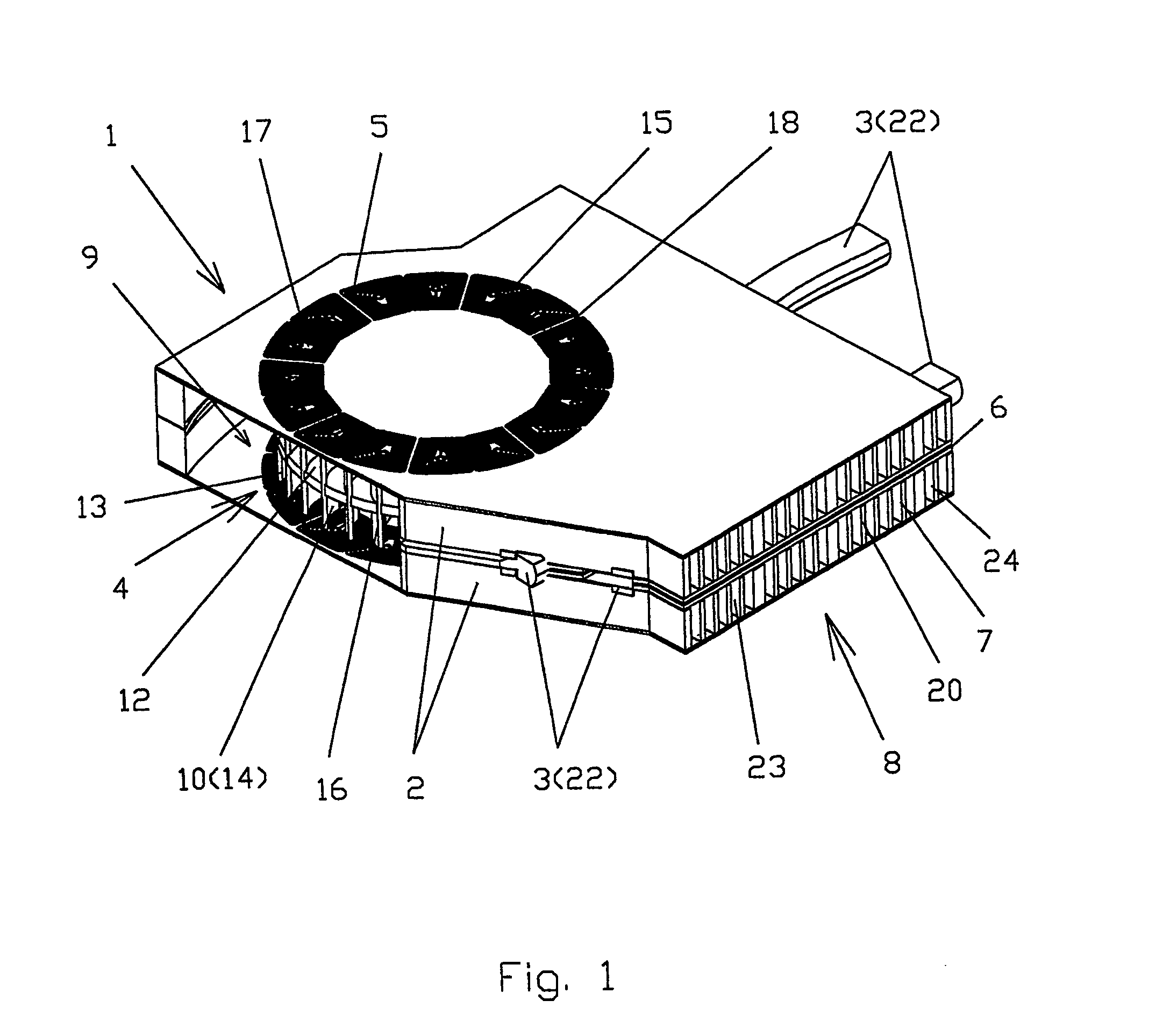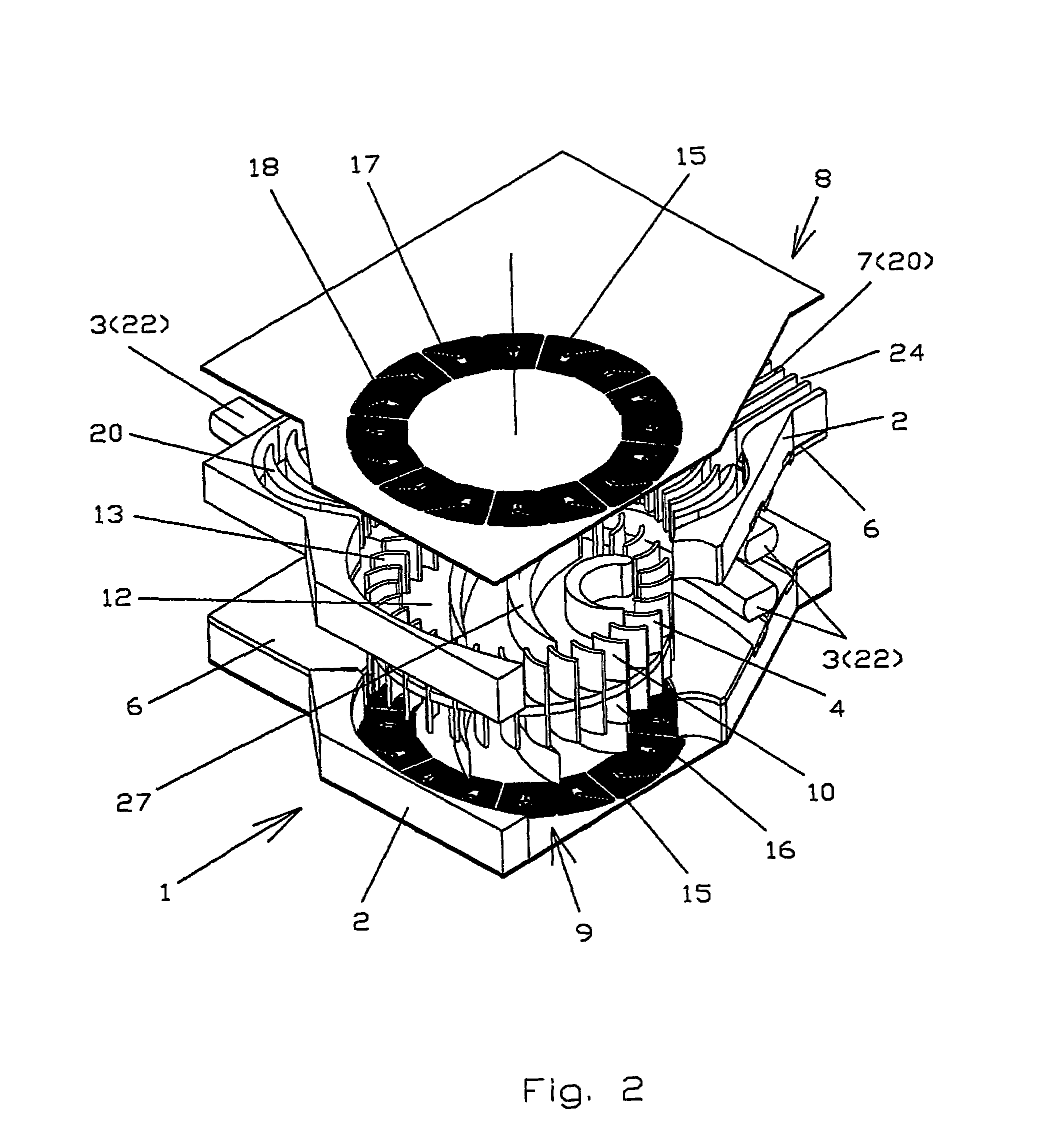Integrated cooler for electronic devices
- Summary
- Abstract
- Description
- Claims
- Application Information
AI Technical Summary
Benefits of technology
Problems solved by technology
Method used
Image
Examples
first embodiment
[0049]FIGS. 1–8 show the present invention.
[0050]The integrated cooler 1 for electronic devices comprises at least one heat exchange element 2, at least one heat transferring element 3, a blower 4 and an electric drive 5. The heat exchange element 2 includes a heat spreading base 6 and heat exchanging means 7 made on a surface of the base 6. The heat spreading base 6 provides thermal contact with the heat transferring elements 3. FIGS. 1–4 and 8 illustrate two heat transferring elements 3. The heat transferring element 3 may be an electronic device 21 (see FIG. 8), a heat-pipe 22 or another heat transferring element 3 made from a high heat-conducting material. The heat exchanging means 7 are pins 19 and / or fins 20.
[0051]The blower 4 comprises a blower inlet 8 and a blower outlet 9, which are directly connected to ambient air, so that the integrated cooler for electronic devices 1 becomes a hydraulically sealed unit. It is possible to use any other cooling gas, not only ambient air. ...
second embodiment
[0073]FIGS. 10 and 11 show the present invention.
[0074]The second embodiment differs from the first embodiment only in that the blower inlet 8 and blower outlet 9 have a different design.
[0075]Other components are the same as in the first embodiment. Therefore the components the same as in the first embodiment are denoted with the same reference numerals, for which description is partly omitted.
[0076]The integrated cooler 1 for electronic devices comprises at least one heat exchange element 2, at least one heat transferring element 3, a blower and an electric drive 5 (not shown for simplicity). The heat exchange element 2 includes a heat spreading base 6 and heat exchanging means 7 made on a surface of the base 6. The heat spreading base 6 provides thermal contact with the heat transferring elements 3. The heat transferring element 3 is a heat-pipe 22. The heat exchanging means 7 are fins 20 that covered from upper side with covering plates (not shown in FIGS. 10 and 11).
[0077]The b...
PUM
 Login to View More
Login to View More Abstract
Description
Claims
Application Information
 Login to View More
Login to View More - R&D
- Intellectual Property
- Life Sciences
- Materials
- Tech Scout
- Unparalleled Data Quality
- Higher Quality Content
- 60% Fewer Hallucinations
Browse by: Latest US Patents, China's latest patents, Technical Efficacy Thesaurus, Application Domain, Technology Topic, Popular Technical Reports.
© 2025 PatSnap. All rights reserved.Legal|Privacy policy|Modern Slavery Act Transparency Statement|Sitemap|About US| Contact US: help@patsnap.com



